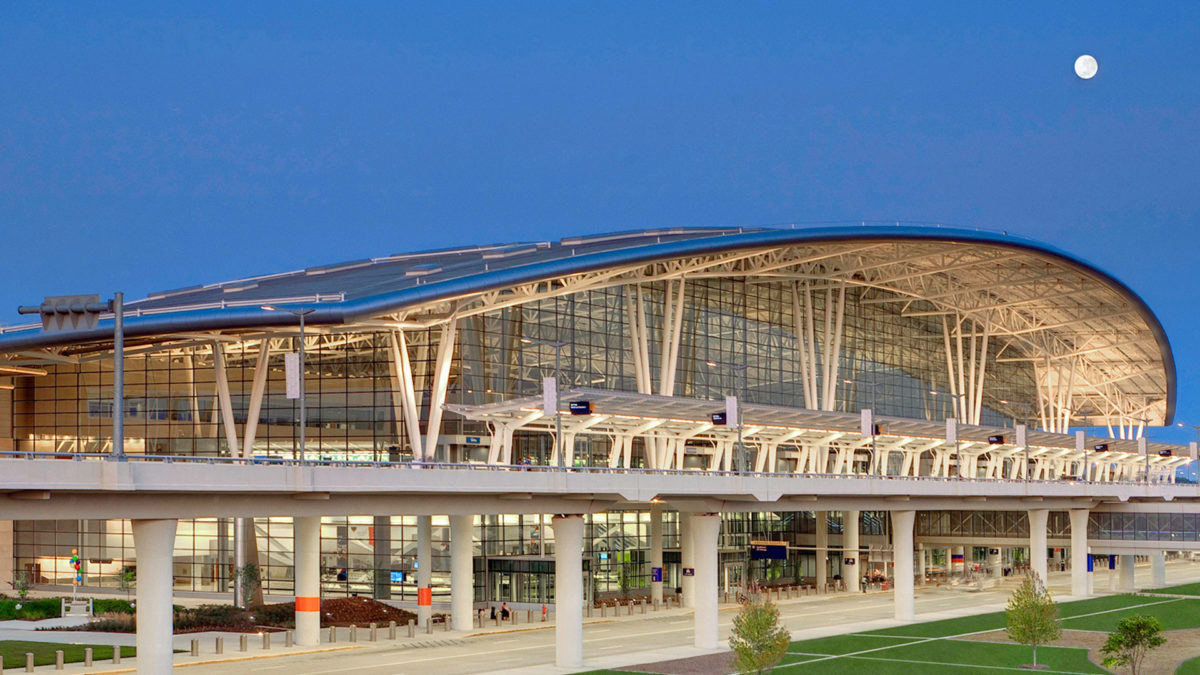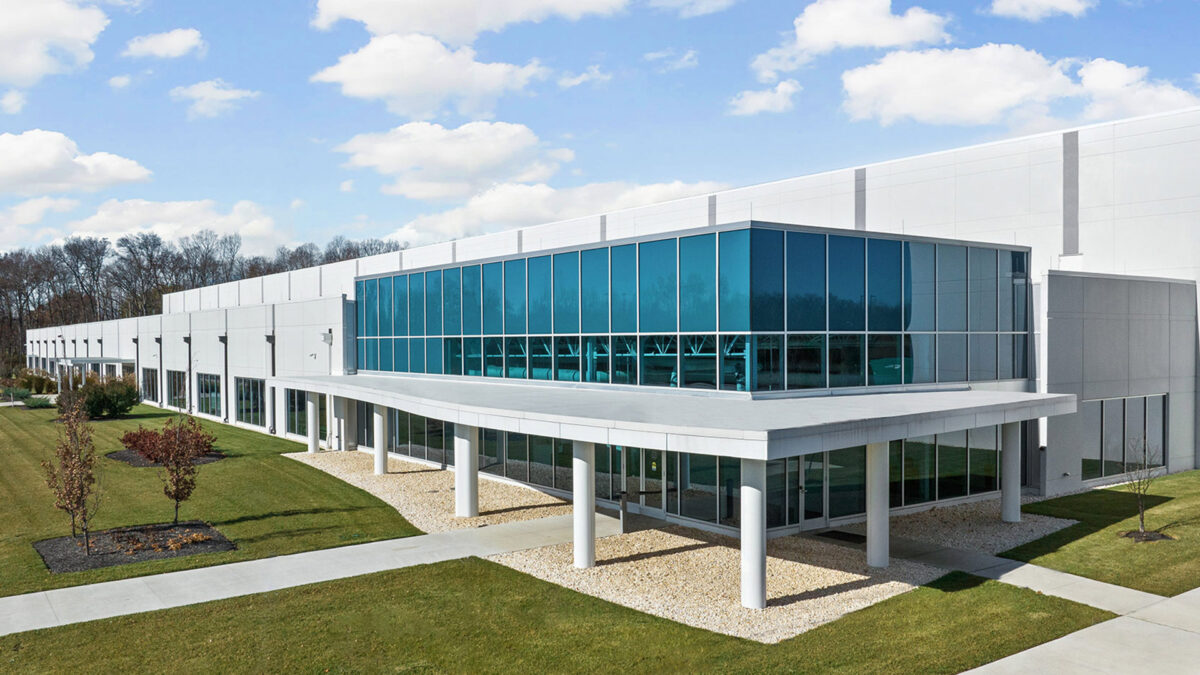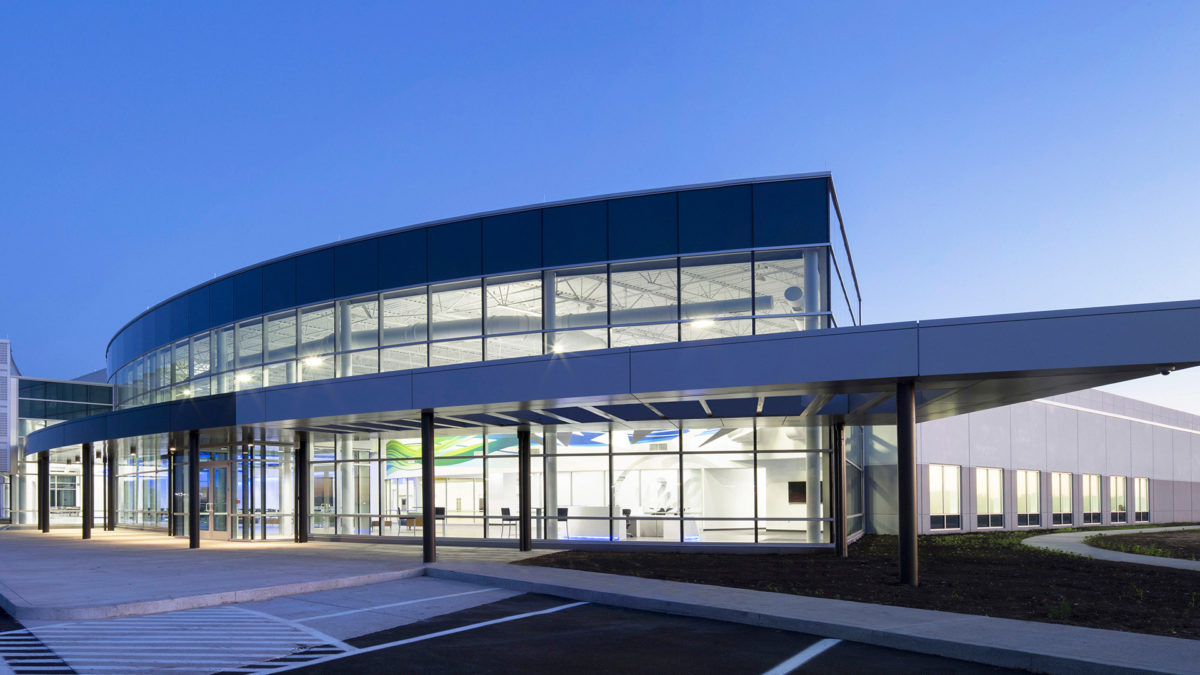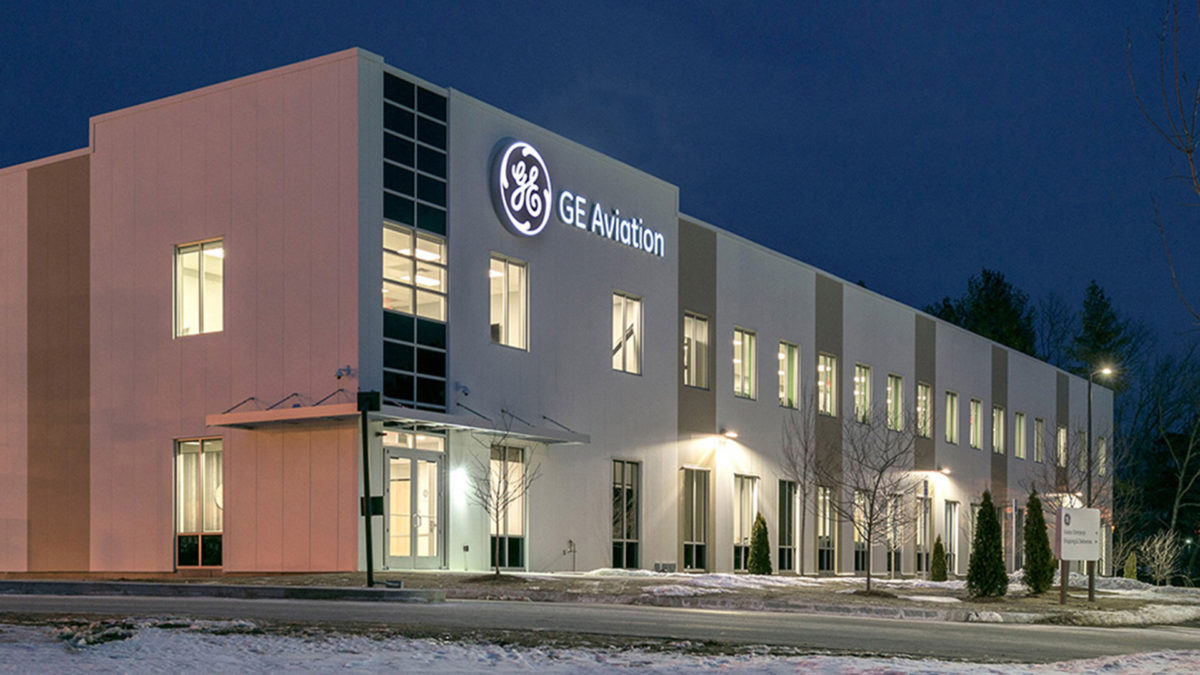
The terminal at the Indianapolis International Airport is a modern, dual-level terminal located midfield between the two main runways. The terminal is designed as a dynamic, changing form that reveals its purpose as a destination, gateway, and powerful symbol of the city. The first complete airport campus to earn LEED certification, the airport is built for growth and flexibility well into the future.
CSO directed and coordinated the design development, construction documents, bidding, and construction administration phases of this seven-year project. The firm displayed the key skills that airport planners were looking for to lead this partnership, including; the ability to collaborate with the Design Architect and other consultants; an outstanding track record in partnerships with Disadvantaged, Minority, and Women Business Enterprises; and experience with large, multifaceted projects that demand aggressive scheduling and multiple bid package experience. This project was designed in collaboration with HOK.

The genesis of the facility’s design was the result of harmonious collaboration between the GE/Unison leadership team, engineers, project developer, construction partner, and the architectural and engineering team. Working closely with GE engineers over several months, the design team developed a manufacturing space that seamlessly marries form and function.
Inspired by GE’s visionary ethos of melding machines, data, and humanity, the new facility is rich with refined elements and humanistic warmth. Contemporary design intertwines with timeless materials in a light-filled space. Linear and curved elements pay homage to the intricate components of aircraft engines. Amidst the sleek sophistication, the design honors GE’s storied legacy, a testament to its history, innovation, and enduring success.
Within the office space, a variety of workspaces, meeting rooms, and communal areas foster collaboration and innovation. Key amenity spaces prioritize employee wellness and productivity, from the expansive fitness center to the Mothers’ Room, café, and health clinic.
Externally, the facility stands as a beacon of modernity and efficiency. Panelized precast concrete juxtaposed with expansive storefront and curtain wall window systems evoke a sense of innovation and dynamism. The rhythmic fenestration of the office and lobby areas invites abundant natural light and views, while energy efficient, low-e insulated glass helps control heat gain and manages energy consumption and operational costs.
Located within the Miami Valley Research Park in Beavercreek, Ohio – a suburb of Dayton – the facility emerges as a nexus of ingenuity and possibility. Manufacturing operations focus on engine components and mechanical systems for civil, military aviation, and aero derivative applications.

The GE Aerospace LEAP Engine Facility is the second of its kind in the United States and the third project of this type CSO has designed for GE. The facility features some of the most advanced manufacturing techniques in the world and represents a major milestone in technology development in this country.
The 35’ clear height manufacturing space included 80’ structural spans with 12.5 ton beam cranes, 10” thick, ultra-flat, polished concrete floors and generous amounts of natural light provided by expansive clerestory windows. The tiered ceiling panels within the assembly space help humanize the scale. They serve as a space transition and a subtle representation of flight. The finishes are intentionally light, clean, and neutral. This notion relates directly to the GE brand and the idea of intentional design without compromise.
The office/administrative portion of the building was designed to express the aerodynamic curvature and the composite construction techniques of the LEAP engine, most notably its fan blade, by dramatically incorporating several overlapping layers of sinuously curved metal, glass, and steel.
The interior design reinforces the intentional nature of the engine while embracing the technology. The central greeting point is a reception desk designed as a seamless, clean cone and constructed of solid surface. Beautifully crafted metal composite triangles are suspended above the reception desk representing the combustion technology present within the LEAP engine. In addition, this sculptural element contributes to the notion of movement so dominantly present within the architecture.

The CSO-designed expansion of this facility, including equipment, represents a $50 million investment to modernize and grow GE Aerospace’s existing Hooksett manufacturing facility. The facility, with nearly 900 employees, manufactures rotating parts for GE’s military and commercial jet engines. The expansion will significantly increase manufacturing output and technological capacity for key components of GE’s next-generation LEAP engines.
This was the fourth large-scale project CSO has partnered with GE Aerospace on, including two plants in Mississippi, $100 million LEAP assembly plant in Lafayette, Indiana, and a $120 million Brilliant Factory in Welland, Ontario, Canada.

This new facility services three aviation units, utilizing three UH-60 Blackhawks and two 0H-58 Kiowa helicopters. The hangar portion of the facility is comprised of three heated maintenance bays and two unheated aircraft storage bays. The adjoining office area houses administrative areas, an aviation life support equipment shop, lockers, restrooms, and training areas.
One of the major challenges presented to the project team was the need to comply with the FAA’s building height limitation requirements while accommodating the minimum height required by the Indiana National Guard’s aviation equipment. Due to these constraints, the hangar structure was limited to a total height of 13′-4″.
This facility was the first of three phases in a $25.5 million, federally funded project “intended to enhance the Indiana National Guard’s ability to successfully perform its missions, from fighting world-wide terrorism to providing support in time of natural and manmade disasters to the citizens of Indiana.” The facility earned the Army’s SPiRiT Silver self-certified rating and gave the Guard much-needed access to the Chicago/northwest Indiana metropolitan area.




